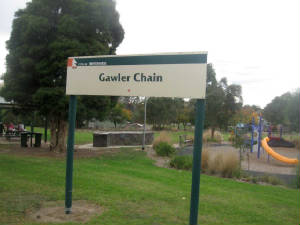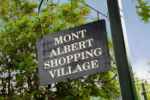|
|

|
| 2013 - Koonung Creek Wetlands (author) |
Overview
Whitehorse Council manages a number of bushland reserves throughout the
municipality, a few of which are in the Mont Albert/Mont Albert North districts. Many of these areas are natural remnants
of the original vegetation that existed before development occurred. Some areas are
recreated or revegetated through the introduction of native plants.
Sizes of
bushland areas vary from small clumps that may only be few square metres through to
vegetation that occupies a number of hectares. Why Do We Have Bushland Reserves?
Bushland
reserves provide a home for local native wildlife and help preserve wildflowers and
other indigenous vegetation. Bushland reserves also offer great spaces for the community
to enjoy.
Spring
Colour in Bushland Reserves
Native bushland produces a stunning array
of wildflowers and flowering shrubs that come alive in spring. In some bushland parks
you will see native orchids and a carpet of wildflowers during the spring
period. Please don't pick wildflowers as all park visitors enjoy seeing them in their
natural environment.
What Sort of Animals Are
Found in Our Bushland Reserves?
A range of indigenous and non-indigenous
animals may be seen from time to time in bushland parks. It is unusual to see large
marsupials but there have been recorded sightings of kangaroos, koalas, and
echidnas. More commonly seen are ringtail and brushy tail possums, lizards, birds and
insects. Snakes may be seen from time to time. If you allow them sufficient space and
don't disturb them, they generally will not pose a danger to you.
What is Habitat?
The homes and food sources that indigenous animals
require is known as habitat. Habitat may include dead tree hollows, native grasses,
logs, rocks or water bodies. In bushland reserves you will see areas of long unmown
grass, standing dead trees, shrubs and wildflowers, which are all preserved as habitat
for animals.
What
About Wetlands?
Wetlands are special aquatic habitats that
provide a home for various birds, fish, and insects. Wetlands also help to treat storm
water runoff to make it cleaner when it arrives at creeks before heading to the bay.
Litter collection must be performed regularly at wetlands because paper and cans dropped
in the street make their way through the stormwater system into wetlands.
Doesn't the Bush Look After Itself?
Bush
is a complex natural system that there are a number of issues
that need to be managed. Weeds will totally dominate natural bush unless they are controlled.
Some plants that are grown in gardens have the potential to spread dramatically in
bushland and may over run the local native vegetation, these are known as environmental
weeds. Dumping of garden rubbish and lawn clippings results in the spread
of weeds, increased fire risk and may encourage other uncontrolled
dumping.
Sometimes non-indigenous animals may degrade the natural
environment or attack native wildlife so from time to time these may need to be
responded to. Who Looks After Our Bushland?
Council
manages bushland areas with the active support of many
community volunteers. Members of the local community also assist by reporting
matters requiring attention such as fallen tree limbs or vandalised signs as well as
generating interest within the local community.
Remnant Bushland in Urban Areas
Clearance of native vegetation
is the single greatest threat to terrestrial
biodiversity. Bushland areas require less water than the more traditional parks and
gardens. Active involvement in the preservation of these areas by local conservation
groups fosters a strong sense of community and ownership. (Source for the above: Whitehorse Council)
|
|

|
| 2013 - Gawler Chain Reserve |
Bushland Areas in the Study Region
The main bushland areas are in the Koonung Creek Reserve, and the Gawler Chain Reserve, both in Mont
Albert North. Remnants survive in the Kingsley Gardens, Mont Albert Park, and the
Mont Albert Reserve.
|
|

